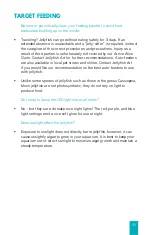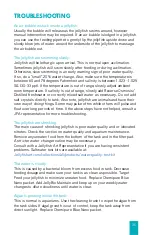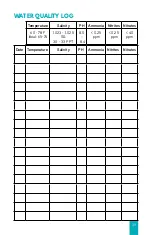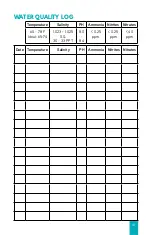
30
FEEDING
Standard feeding amounts:
• 1/4 of a scoop of JellyFood daily. Scoop is located within food bag.
• -OR- enough strained live artemia (baby brine shrimp from the included
hatcher) that can be consumed in 15-20 minutes. Use the white sieve to
collect daily hatched brine to feed. See
PAGE 32
for more information.
PRO TIP: Remove uneaten food daily to avoid fouling the water.
In the wild, jellyfish rely heavily on oceanic currents for food. As they pulse,
they create a micro-current that brings prey items such as zooplankton
(free-swimming organisms including krill, larval crustaceans, and fish)
into contact with the stinging surfaces of their tentacle. It is important
to recognize that jellyfish do not need to eat very much food in order to
maintain healthy jellyfish. The energy demands of jellyfish are low because
their biology is so simple and their movements do not require much energy.
In the wild, jellyfish will ride water currents, pulse infrequently, and catch
whatever prey items float their way at random.
One of the biggest problems our customers have is overfeeding of their
jellyfish. This leads to poor water quality parameters, which can be stressful
on the jellyfish. Ideally, food should be kept off the bottom of the aquarium
by re-suspending it using your feeding pipette. This allows your jellyfish
another opportunity to feed before the food decays. Otherwise excess food
particulate should be removed during regular water changes or with a
mini-siphon.
How do I know if my jellyfish are eating?
• You will see food in the stomach of the jellyfish – this is the four-leaf
clover shape on the inside of the bell.
Why do I need to use JellyFood?
• It is similar to the natural diet of Moon jellyfish.
• It contains several species of dried plankton with lots of highly
unsaturated fatty acids, which are essential for proper nutrition. It also
contains Phytoplankton (Green areas you may see in our food blend)
• It remains in suspension of the water column for some time, allowing
the jellyfish to feed as they do in the wild.
































